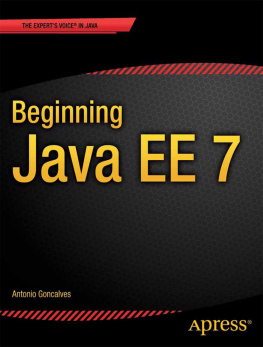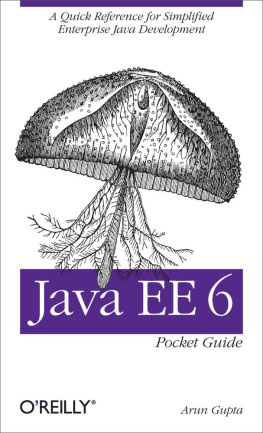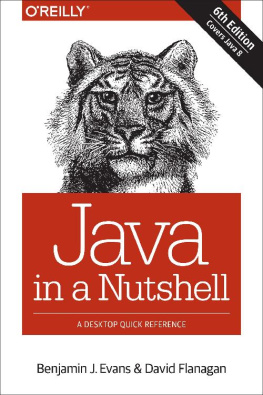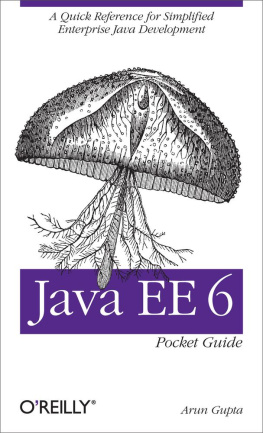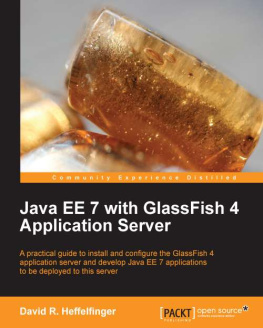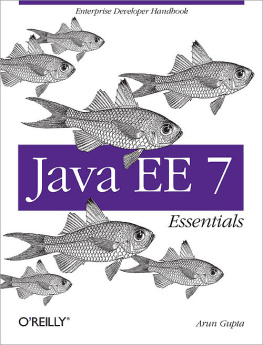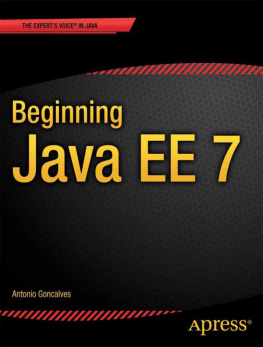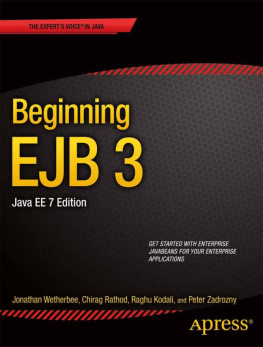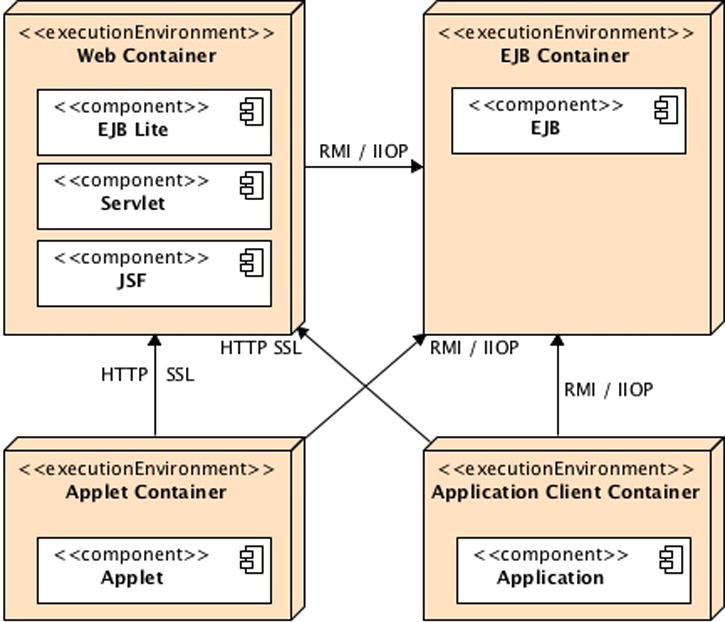1. Java EE 7 at a Glance
Abstract
Enterprises today live in a globally competitive world. They need applications to fulfill their business needs, which are getting more and more complex. In this age of globalization, companies are distributed over continents, they do business 24/7 over the Internet and across different countries, have several datacenters, and internationalized systems which have to deal with different currencies and time zonesall that while reducing their costs, lowering the response times of their services, storing business data on reliable and safe storage, and offering several mobile and web interfaces to their customers, employees, and suppliers.
Enterprises today live in a globally competitive world. They need applications to fulfill their business needs, which are getting more and more complex. In this age of globalization, companies are distributed over continents, they do business 24/7 over the Internet and across different countries, have several datacenters, and internationalized systems which have to deal with different currencies and time zonesall that while reducing their costs, lowering the response times of their services, storing business data on reliable and safe storage, and offering several mobile and web interfaces to their customers, employees, and suppliers.
Most companies have to combine these complex challenges with their existing enterprise information systems (EIS) at the same time developing business-to-business applications to communicate with partners or business-to-customer systems using mobile and geolocalized applications. It is also not rare for a company to have to coordinate in-house data stored in different locations, processed by multiple programming languages, and routed through different protocols. And, of course, it has to do this without losing money, which means preventing system crashes and being highly available, scalable, and secure. Enterprise applications have to face change and complexity, and be robust. Thats precisely why Java Enterprise Edition (Java EE) was created.
The first version of Java EE (originally known as J2EE) focused on the concerns that companies were facing back in 1999: distributed components. Since then, software applications have had to adapt to new technical solutions like SOAP or RESTful web services. The Java EE platform has evolved to respond to these technical needs by providing various ways of working through standard specifications. Throughout the years, Java EE has changed and became richer, simpler, easier to use, more portable, and more integrated.
In this chapter, Ill give you an overview of Java EE. After an introduction to its internal architecture, components, and services, Ill cover whats new in Java EE 7.
Understanding Java EE
When you want to handle collections of objects, you dont start by developing your own hashtable; you use the collection API (application programming interface ). Similarly, if you need a simple Web application or a transactional, secure, interoperable, and distributed application, you dont want to develop all the low-level APIs: you use the Enterprise Edition of Java. Just as Java Standard Edition (Java SE) provides an API to handle collections, Java EE provides a standard way to handle transactions with Java Transaction API (JTA), messaging with Java Message Service (JMS), or persistence with Java Persistence API (JPA). Java EE is a set of specifications intended for enterprise applications. It can be seen as an extension of Java SE to facilitate the development of distributed, robust, powerful, and highly available applications.
Java EE 7 is an important milestone. Not only does it follow in the footsteps of Java EE 6 by focusing on an easier development model, but it also adds new specifications, as well as adding new functionalities to existing ones. Moreover, Context and Dependency Injection (CDI) is becoming the integration point between all these new specifications. The release of Java EE 7 coincides closely with the 13th anniversary of the enterprise platform. It combines the advantages of the Java language with experience gained over the last 13 years. Java EE profits from the dynamism of open source communities as well as the rigor of the JCP (Java Community Process) standardization process. Today Java EE is a well-documented platform with experienced developers, a large community, and many deployed applications running on companies servers. Java EE is a suite of APIs that can be used to build standard component-based multitier applications. These components are deployed in different containers offering a series of services.
Architecture
Java EE is a set of specifications implemented by different containers. Containers are Java EE runtime environments that provide certain services to the components they host such as life-cycle management, dependency injection, concurrency, and so on. These components use well-defined contracts to communicate with the Java EE infrastructure and with the other components. They need to be packaged in a standard way (following a defined directory structure that can be compressed into archive files) before being deployed. Java EE is a superset of the Java SE platform, which means Java SE APIs can be used by any Java EE components.
Figure shows the logical relationships between containers. The arrows represent the protocols used by one container to access another. For example, the web container hosts servlets, which can access EJBs through RMI-IIOP.
Figure 1-1.
Standard Java EE containers
Components
The Java EE runtime environment defines four types of components that an implementation must support:
Applets are GUI (graphic user interface) applications that are executed in a web browser. They use the rich Swing API to provide powerful user interfaces.
Applications are programs that are executed on a client. They are typically GUIs or batch-processing programs that have access to all the facilities of the Java EE middle tier.
Web applications (made of servlets, servlet filters, web event listeners, JSP and JSF pages) are executed in a web container and respond to HTTP requests from web clients. Servlets also support SOAP and RESTful web service endpoints. Web applications can also contain EJBs Lite (more on that in ).
Enterprise applications (made of Enterprise Java Beans, Java Message Service, Java Transaction API, asynchronous calls, timer service, RMI/IIOP) are executed in an EJB container. EJBs are container-managed components for processing transactional business logic. They can be accessed locally and remotely through RMI (or HTTP for SOAP and RESTful web services).
Containers
The Java EE infrastructure is partitioned into logical domains called containers (see Figure ). Each container has a specific role, supports a set of APIs, and offers services to components (security, database access, transaction handling, naming directory, resource injection). Containers hide technical complexity and enhance portability. Depending on the kind of application you want to build, you will have to understand the capabilities and constraints of each container in order to use one or more. For example, if you need to develop a web application, you will develop a JSF tier with an EJB Lite tier and deploy them into a web container. But if you want a web application to invoke a business tier remotely and use messaging and asynchronous calls, you will need both the web and EJB containers. Java EE has four different containers:

